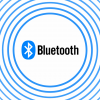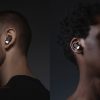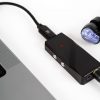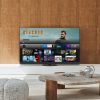Your want a flat screen TV, right? Well, you can’t get any flatter than a screen on the wall. I am not talking about plasma or LCD TVs. I mean actually mounting a screen to a wall. Granted, it’s nothing but a framed piece of material. It’s what can display the best picture from today’s low cost video projectors.
Choose a Budget?
The cost of a projector/screen starter combination now rivals the average cost of a 42-inch plasma TV ($3,000 – $5,000). But most projectors can display images well over 100-inches in diagonal. With a screen that size you need a decent sized room, since seating 1.5 times the diagonal is recommended. Have a bigger room? Then go even bigger on the screen.
Select Dimensions
Once deciding on a screen size, you need to select an aspect ratio (4:3 or 16:9 or 1.85:1). But aspect ratio selection depends on your intended use for the screen. 4:3 is the aspect ratio of normal TV, 16:9 is for HDTV and 1.85:1 is for movies. The 16:9 screen is most versatile and widely purchased for the home.
Windows and Lights?
How much ambient light is in your room? Can you control it? These questions tell you how much gain should be in your screen. Gain is a measure of the amount of light reflected off the screen. Higher gain screens provide a brighter (not necessarily better) picture and alleviate ambient light problems, while lower gain screens require a completely dark room. A gain of 1 is considered neutral.
Take Your Seat
Finally consider all of your seating positions and viewing angles. Some screens will lose their video quality when viewed too far off to one side. Although, in a home theater everyone gets a good seat, so this really isn’t a major issue.
Analysis Not Comparison
With screen basics taken care of, let’s take a look at two screens I have been able to demo — The Stewart Filmscreen FireHawk and the Vutec SilverStar. Both screens are 110″ diagonal 16:9. I originally wanted to compare these screens head-to-head, but I soon realized each screen is suited for different environments. Therefore, I will tell my analysis and hopefully it will help you decide what is best for you.
Flexible FireHawk Deluxe
The Stewart Filmscreen FireHawk arrived first. It is a flexible screen which came disassembled in a long, tall box. It contained the screen, which was rolled up in a protective tube and the black metal deluxe frame with associated parts. Each side of the 4-piece frame easily fit together, and the screen itself has dozens of buttons that snap into the frame. The deluxe frame has a 3¼ inch black velvet bevel border, which hides any overscan picture elements and provides a clean look.
Gray Screen Observations
You might envision all screens to be white. But the FireHawk is a gray colored screen. The theory behind the use of a gray screen is to enhance black-levels, since deep black and proper gray-scale is most difficult for a projector to display. The FireHawk is said to be optimized for DLP-type projectors, but I also found it worked well for LCD projectors. The FireHawk did live up to its expectation of improved black levels, but at the same time it couldn’t display a true white image. Items you expected to be white like a shirt collar, sports uniforms, or screen credits tended to be grayish white. I believe, the screens attributes shift the white emphasis, but leave all other colors unchanged. Although your mind still recognizes what should be white, when in fact it is a shade or more off-white. The deeper blacks enhance the illusion. However, the white imbalance is a subtle effect, which would likely go unnoticed to the casual observer. On the plus side, the FireHawk showed no signs of weakness in displaying accurate colors and picture uniformity was even across the screen.
Dim the Lights
The FireHawk has a gain of 1.35, which means the screen’s reflective ability makes images appear 35% brighter than that of a neutral screen, which has a gain of 1. Images looked best in a totally dark room. Although, video is still viewable with some room lighting on. Too much ambient lighting will quickly drown out the picture.
FireHawk Conclusion
Overall, I was quite pleased with the FireHawk screen performance. I believe the white level problem could be overcome with a brighter projector, although I was not able to test it with a projector rated higher than 1000 ANSI lumens. Its ability to produce good black-levels and natural colors with consistent dispersion makes it a clear choice to match with a high-output DLP projector.

SilverStar Revealed
Next, the Vutec SilverStar arrived off the truck in a huge flat wood box. The SilverStar is a fixed screen, so no assembly is required. It came in the standard frame, which has a 1-1/2 inch black velvet bevel. Hanging the screen on the wall required precise alignment of four brackets. The back of the frame slid into the brackets and was securely tightened. After the screen was hung, I noticed the top of the frame had a slight upward bow of approximately 1/4-inch. Therefore, the top of the picture was overscanned onto the frame border to hide the problem. I suspect this was probably a flaw in my screen, but regardless I would recommend upgrading to the deluxe, thicker frame.
Silver Not Gray
The Vutec SilverStar is another non-white screen, but not nearly as dark gray as the FireHawk. As the name implies, the screen is silver, with a shimmering appearance. The SilverStar has gain of 4.5, which quickly tells you it is a highly reflective screen. Hence the screen provides a better picture with room lights on. Of course, the picture still looked best when the room was pitch dark. The extra gain also helps maintain the picture clarity over a greater viewing distance, which is beneficial for extra large theaters or rooms.
More Clarity
The SilverStar picture is noticeably brighter than the FireHawk. Colors stood out and where more vivid. Whites were very bright and clean; black-levels were good but not as deep as the FireHawk. However, the SilverStar revealed more details from darker movie scenes.
Hotspotting
So far, so good except the SilverStar suffers from hotspots, which is when one area of image appears brighter than the rest. It was not an “all the time” problem but tended to be bothersome for my tastes. Although, hotspots may or may not bother you, or be noticeable. Furthermore, hotspots can be minimized by adjusting the projector angle, throw distance, or seating positions, and can vary by projector.
All Around Performer
The SilverStar does not need to be matched up with a super-bright or expensive projector. Its highly reflective surface makes it ideally suited for everyday use — watching TV, sports or movies with the lights on or off. The SilverStar would also work well for presentations in boardrooms, classrooms, tradeshows and other places where light can’t be controlled.
Your Turn
Determine the correct screen for your room and situation, to get the most enjoyment from your video projector. With the low cost and simplicity of today’s DLP and LCD projectors it is easier and more affordable then ever to create your custom home theater. Remember the screen is an investment. Choose wisely.
Vutec SilverStar 110″ Standard 16:9 Screen → $2,604
|
Stewart Filmscreen 110″ Deluxe 16:9 Screen → $1,986
|
Test Equipment:
Studio Experience Matinee 1HD LCD Projector
Sharp DT-200 DLP Projector
InFocus ScreenPlay 110 DLP Projector
Yamaha DVD-C920 Five Disc DVD Changer
Better Cables Component Video Cables
AVIA Guide to Home Theater Calibration DVD































